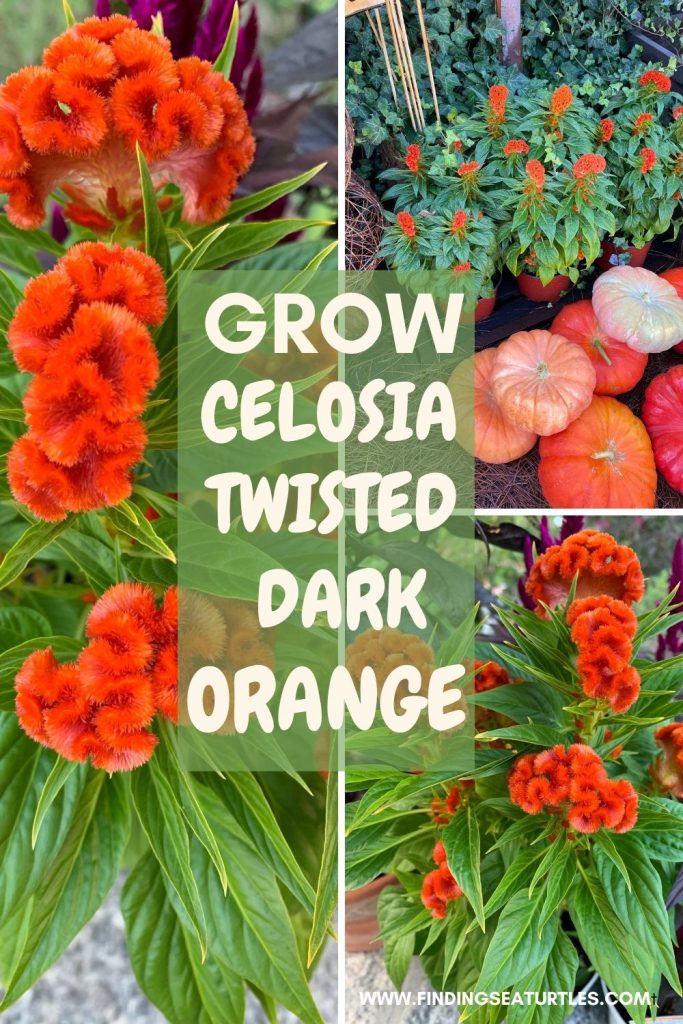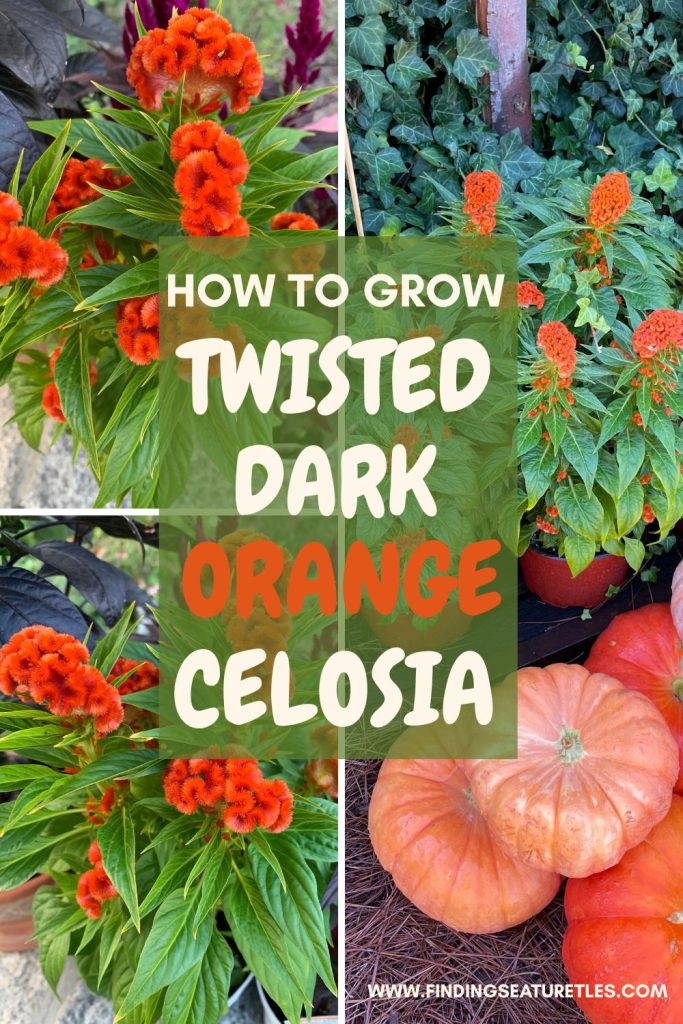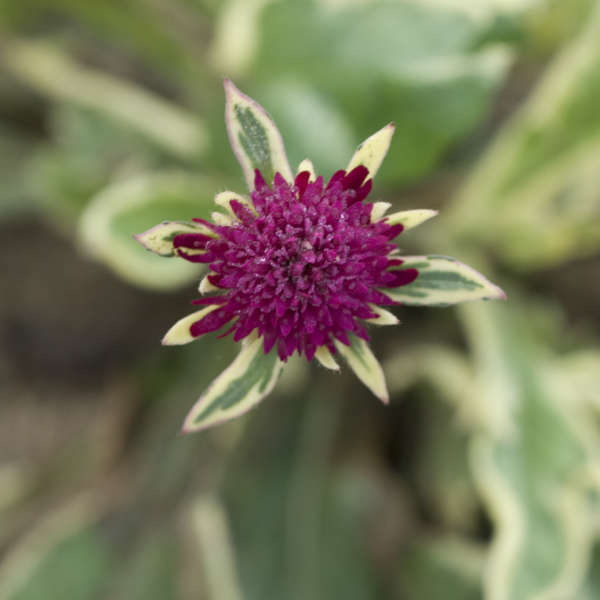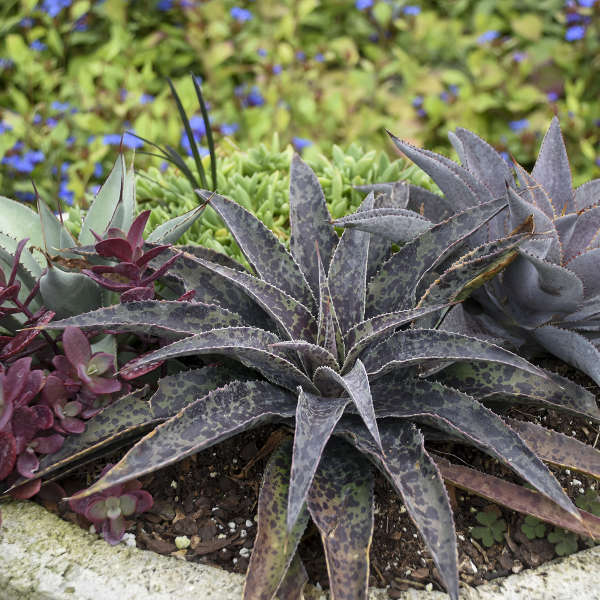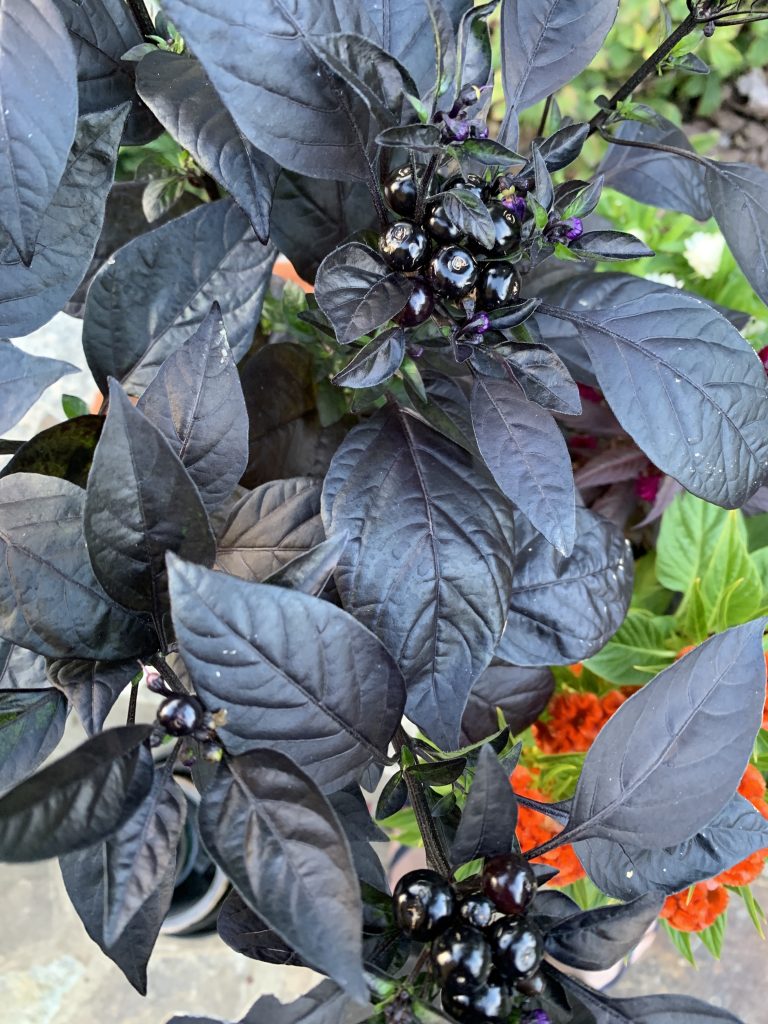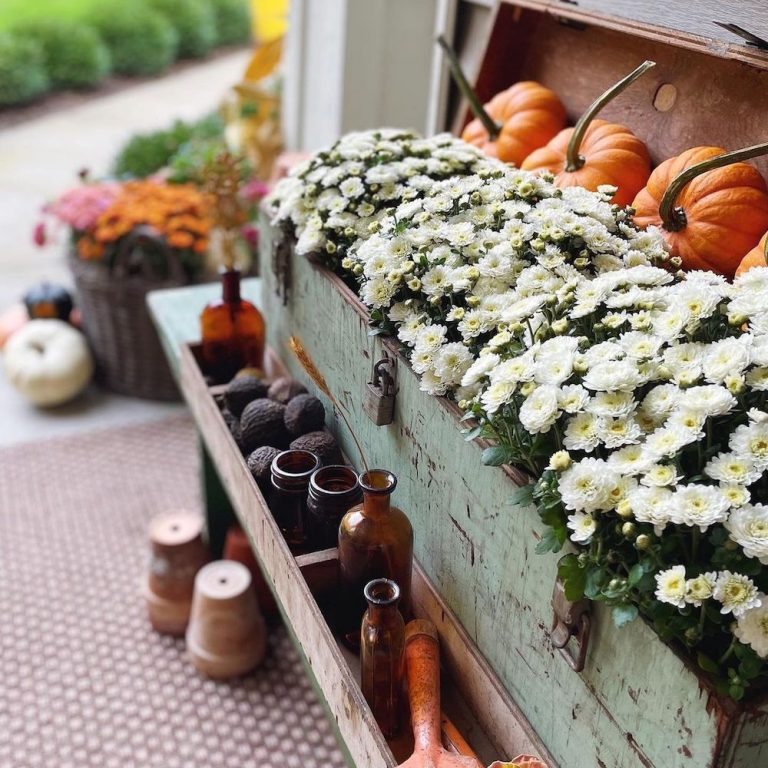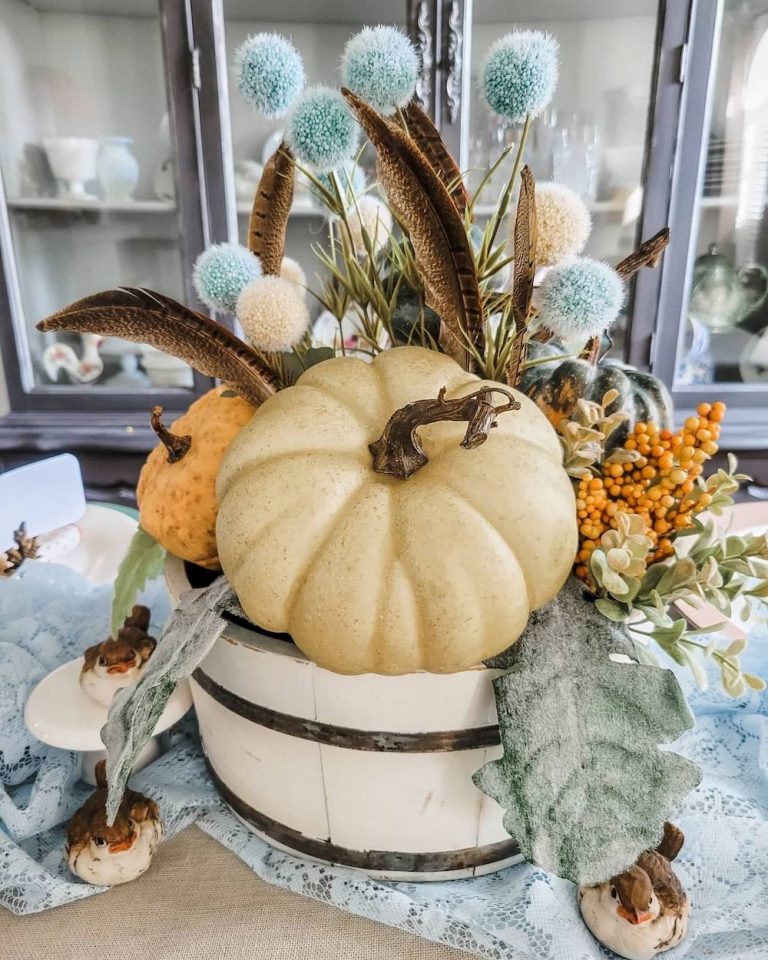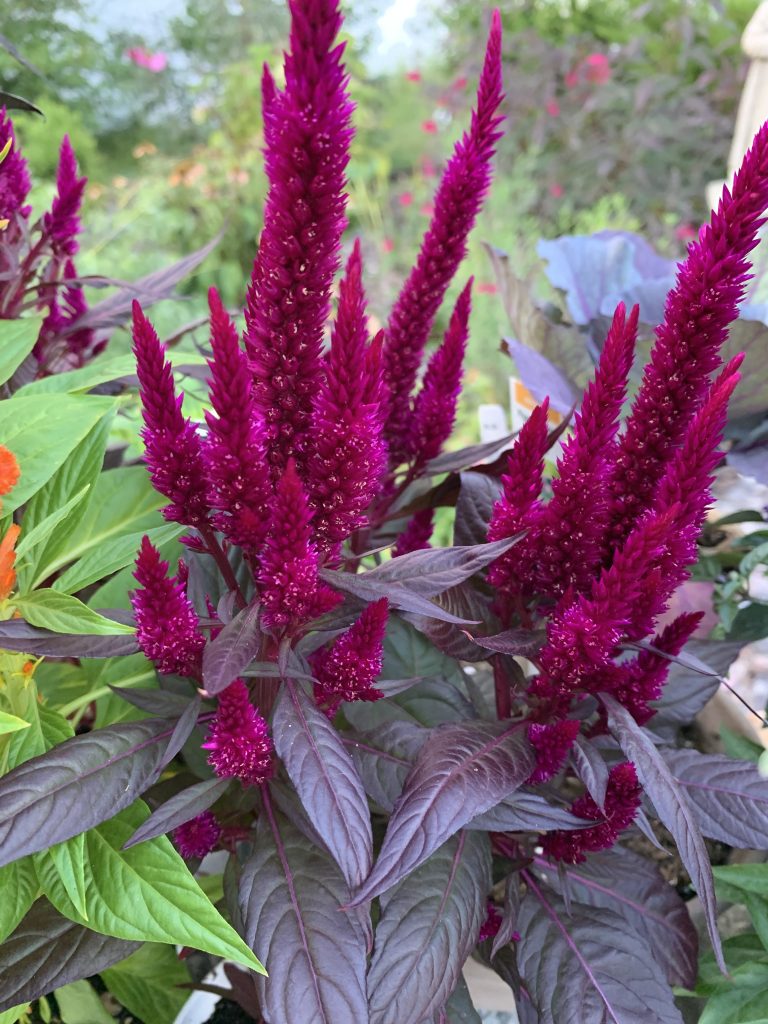How to Grow Celosia Twisted Orange
Grow Celosia Twisted Orange. Celebrate the fall season with Celosia Twisted, dark orange, and other fall-blooming plants. Pollinators will flock to your fall garden with these rich autumn colors. Bees and butterflies love the vibrant orange blooms. In late fall, the flower heads develop seeds that attract songbirds. The Celosia genus as a whole is known for its pollinator-friendly blooms.
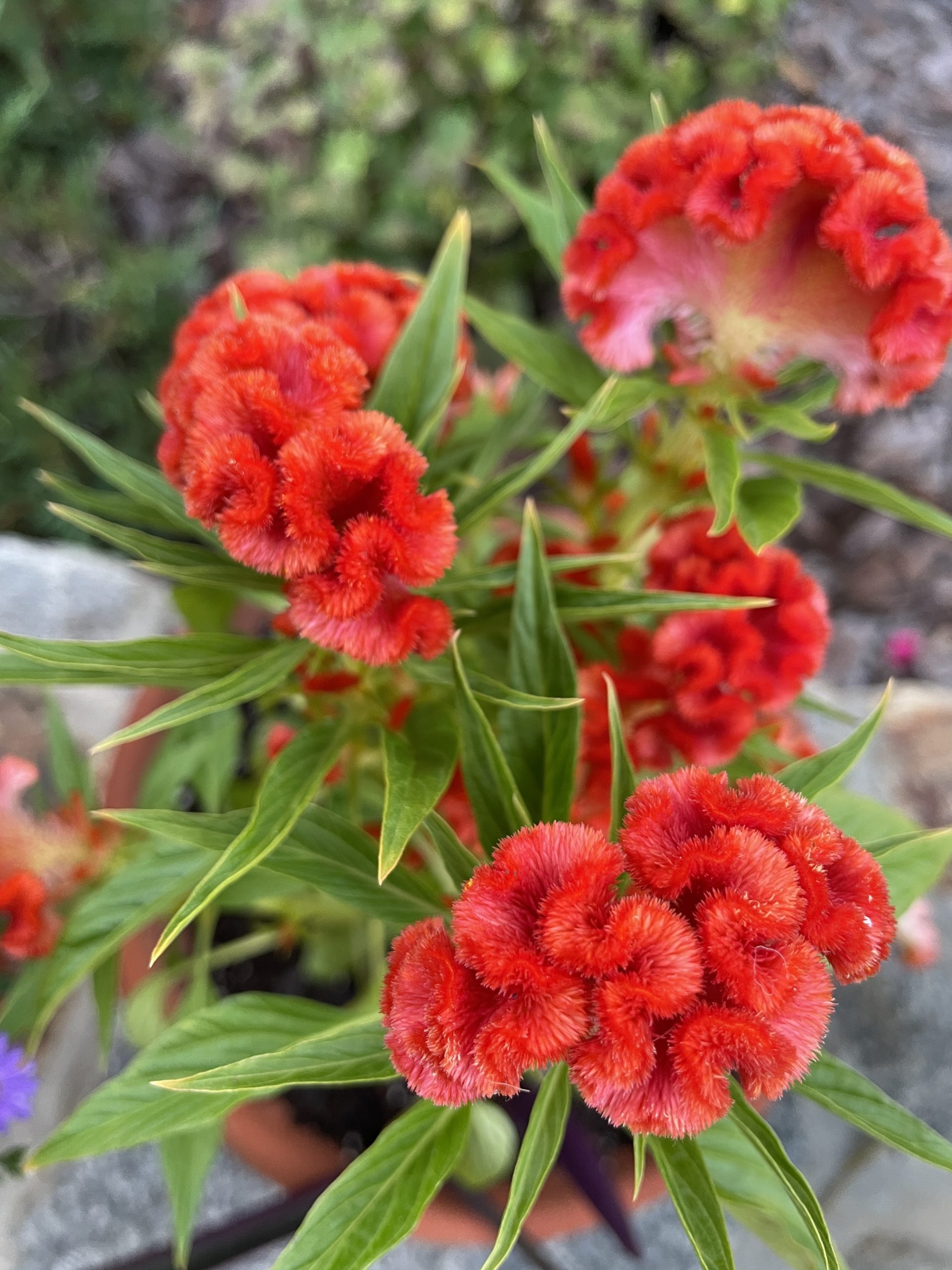
Floral blooms are crested and twisted. The dark orange flower clusters grow during the growing season under full sun. Of the three types of Celosia, the cockscomb is unique. It has a dense, compact flower head that resembles twisted, velvety crests. They are often referred to as Cockscomb since the flower head resembles the fleshy red comb of a rooster’s head.
The types of Celosia are based on the flower structure and overall growth habit. The three flower structures are classified as plumed, wheat, or cockscomb.
Plumed cultivars have feathery-looking flower heads with multiple flower stalks and an upright growth pattern. Plumed Celosia features blooms that resemble flames or plumes. The Celosia Kelos Fire is an example of a plumbed Celosia. The wheat Celosia has slender or narrow spike-like flower heads. The heads resemble wheat stalks.
Native to Tropical Regions
Celosia plants are native to tropical and subtropical regions. Native to Africa, the Americas, and even Asia. Grow Celosia Twisted Orange as an annual in areas with cooler temperatures.
Twisted Dark Orange Celosia is an excellent addition to a fall garden. Grow this distinctive Celosia from late spring until the fall season. Plant this annual with other sun-loving plants. Plants such as Zinnia, Angelonia, and Pentas. For a festive fall display, pair with Asters, Chrysanthemums, and Echinacea plants. With over 60 species of Celosia, there are many to choose from. In today’s post, we are sharing planting tips for the Celosia Twisted Orange plant.
Characteristics of Twisted Dark Orange
The Twisted dark orange is commonly known as Cockscomb and Woolflower. The twisted name refers to the velvety, crested flower head, which resembles twisted combs. Grow in hardy zones 10 to 11. Grows as an annual in cooler climates.
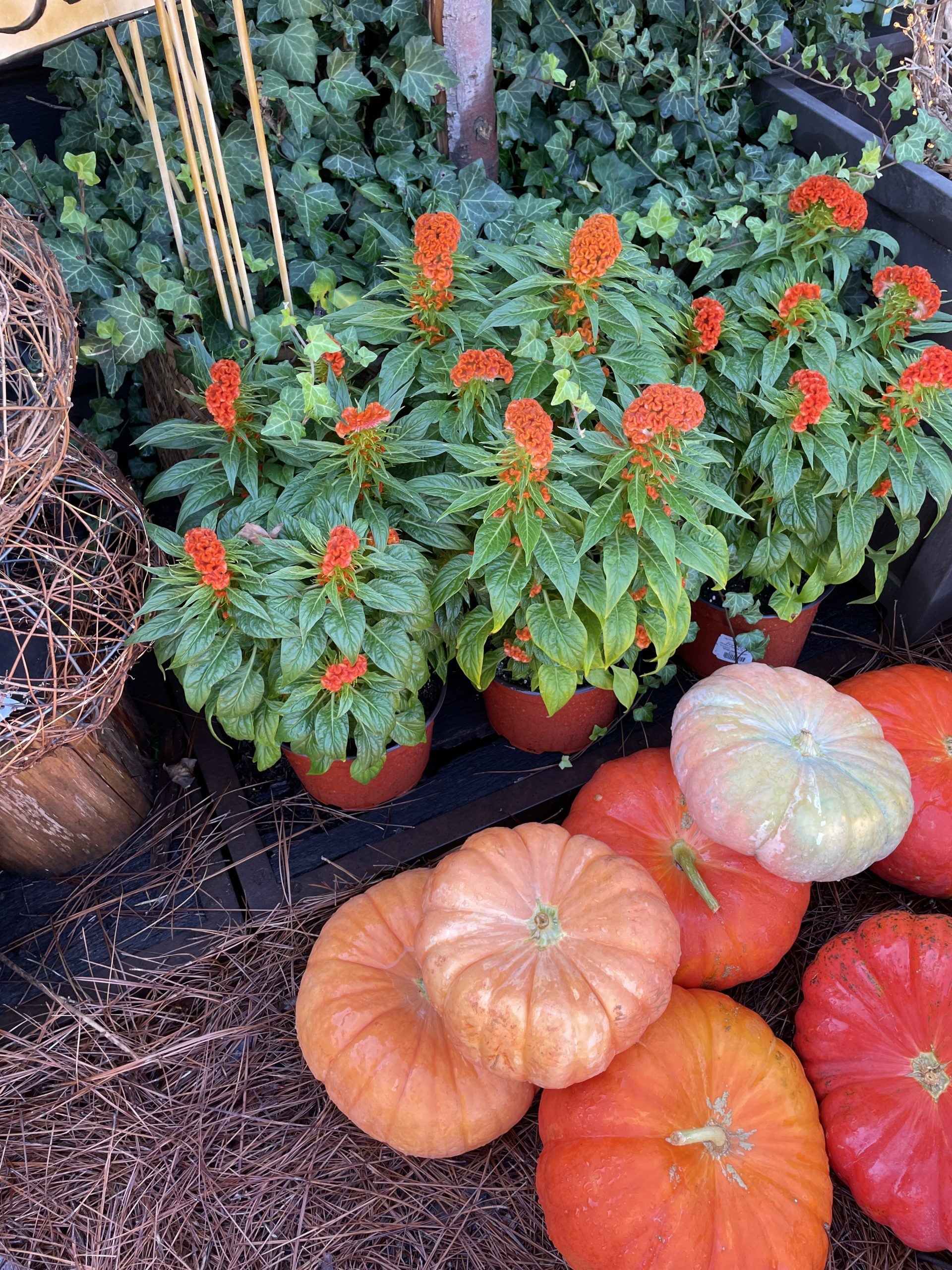
Part of the Amaranthaceae family, Twisted Dark Orange is known for its velvety, crested flower heads. Bright, colorful flowers that liven the garden. Create a grand fall display with pumpkins, gourds, and fall-blooming plants.
Leaves are generally oval or lance-shaped. They are lush green and remain green throughout the season. The green color provides a neat background for the showy, richly colored orange blooms.
How to Grow Celosia Twisted Orange – About Celosia
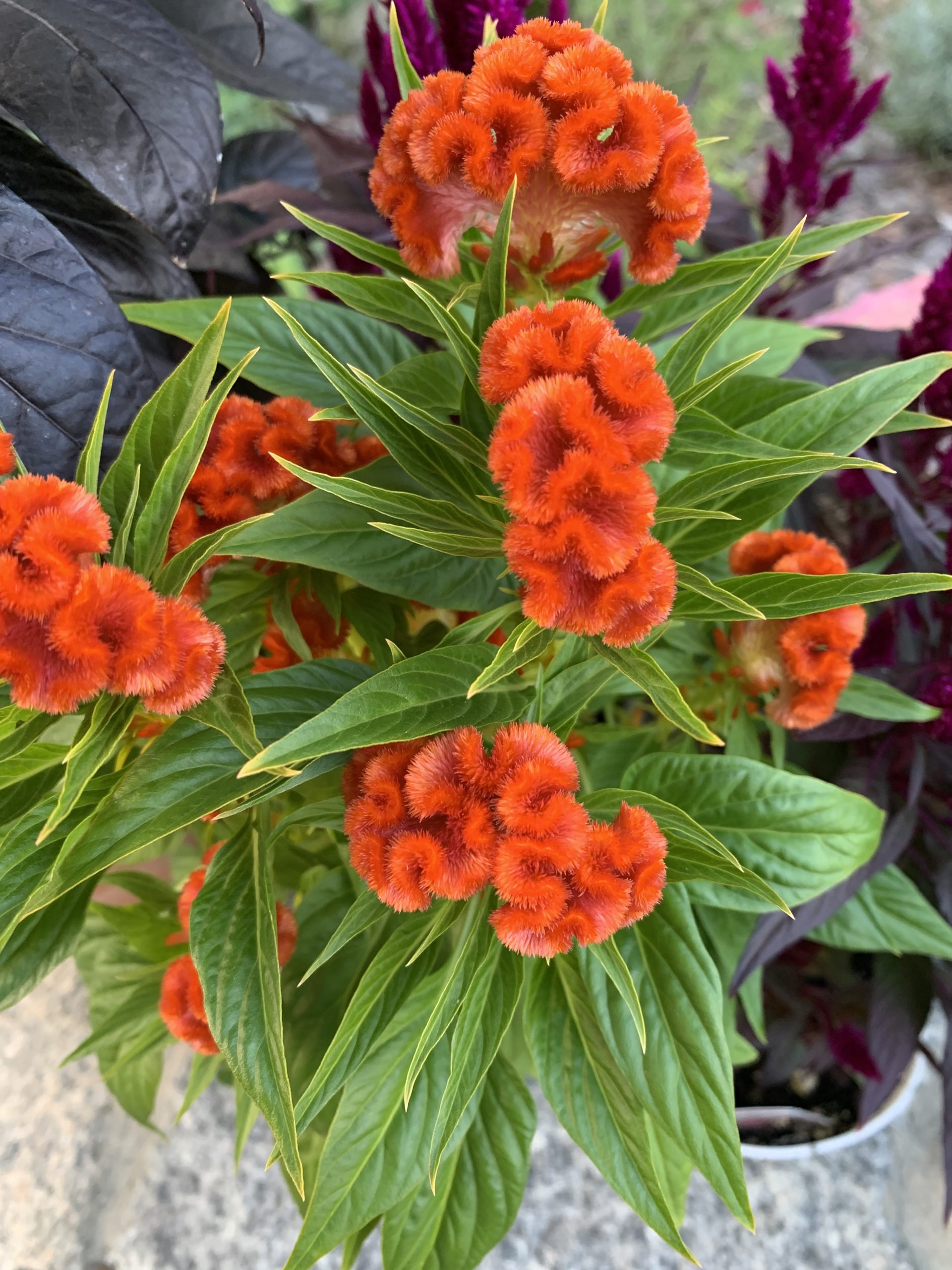
First, the features of the Celosia Twisted Dark Orange. These are the ideal growing conditions for this annual:
- Latin name is Celosia cristata
- Common names include Cockscomb and Woolflower
- Thrives in full direct sun
- Grows in zones 10 to 11
- Reaches 16” to 20” tall with a spread of 12” to 14”
- Space 8” to 12” tall
- Flower heads are twisted, crest-like heads in vivid orange
- Blooms from spring until frost
- Foliage is oval or lance-shaped with a lush green color
- Attracts pollinators, including bees, butterflies
- Dried flower heads create seeds that attract birds
- Growth habit is upright
- Grow in borders, garden beds, or in patio containers
- Thrives in well-draining soil
- Water regularly, but allow the soil to dry out between waterings to prevent overwatering.
- Use flower heads in fresh or dried floral arrangements
- Tolerant of heat and drought conditions
- Native to the tropical areas of Africa, South America, and Southeast Asia
Garden Site Selection for Celosia
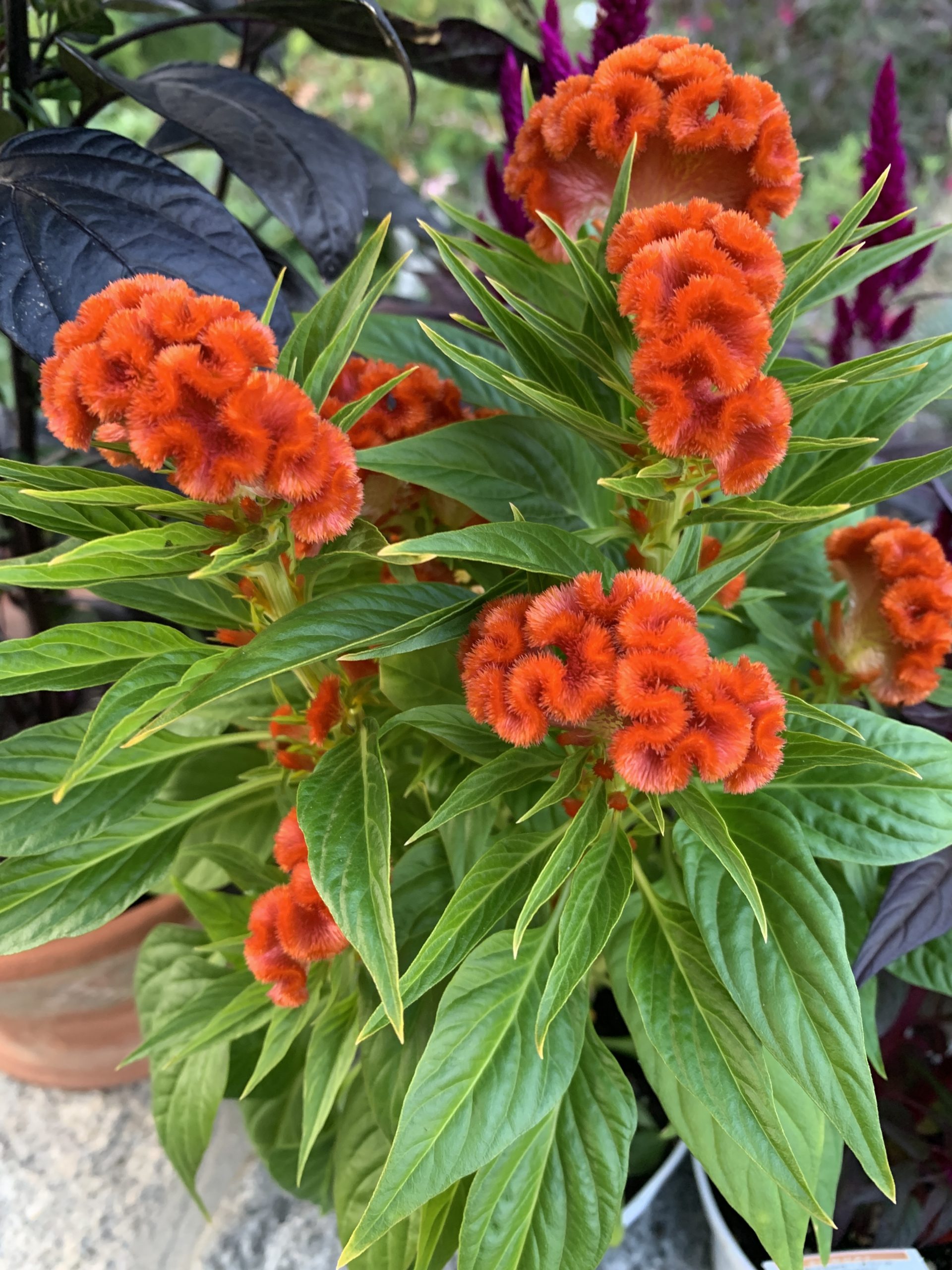
Consider the garden site where you plan to plant the Twisted Orange Celosia. Maintain the colorful dark orange cockscomb flowers in a sun-filled garden spot. Select a sunny location. Plant in late spring or early summer following the last frost.
Tolerant of heat and drought conditions, water regularly but allow to dry between waterings. However, growing Celosia in a container may require more frequent watering. If growing Celosia in the ground, water 2 to 3 times per week until it is established.
Soil Preparation for Celosia
- Prepare the garden soil area by loosening and breaking up the soil with a trowel or shovel.
- Celosia thrives in well-draining soil. Mix existing soil with sphagnum peat moss so that any excess water runs away from the root system in the garden bed. For an added boost, pour compost into the soil mixture.
- Sprinkle milky spore powder in the soil to eliminate grubs. Milky spore powder is an organic product that eliminates grubs in the soil before they develop into Japanese Beetles. Skip the milky spore step if your garden doesn’t have grubs or Japanese Beetles. Milky Spore prevents grubs laid by the Japanese Beetles from emerging the following year. Grubs that live below ground are destructive. They munch on grass roots. Adult Japanese beetles feed on the flowers and foliage of many plants.
If you are planting your Celosia in a container, then mix the peat moss and compost with some quality potting soil. Then, fill a container with the mixture and sprinkle a small amount of milky spore to help control grubs and Japanese Beetles.
How to Grow Twisted Dark Orange
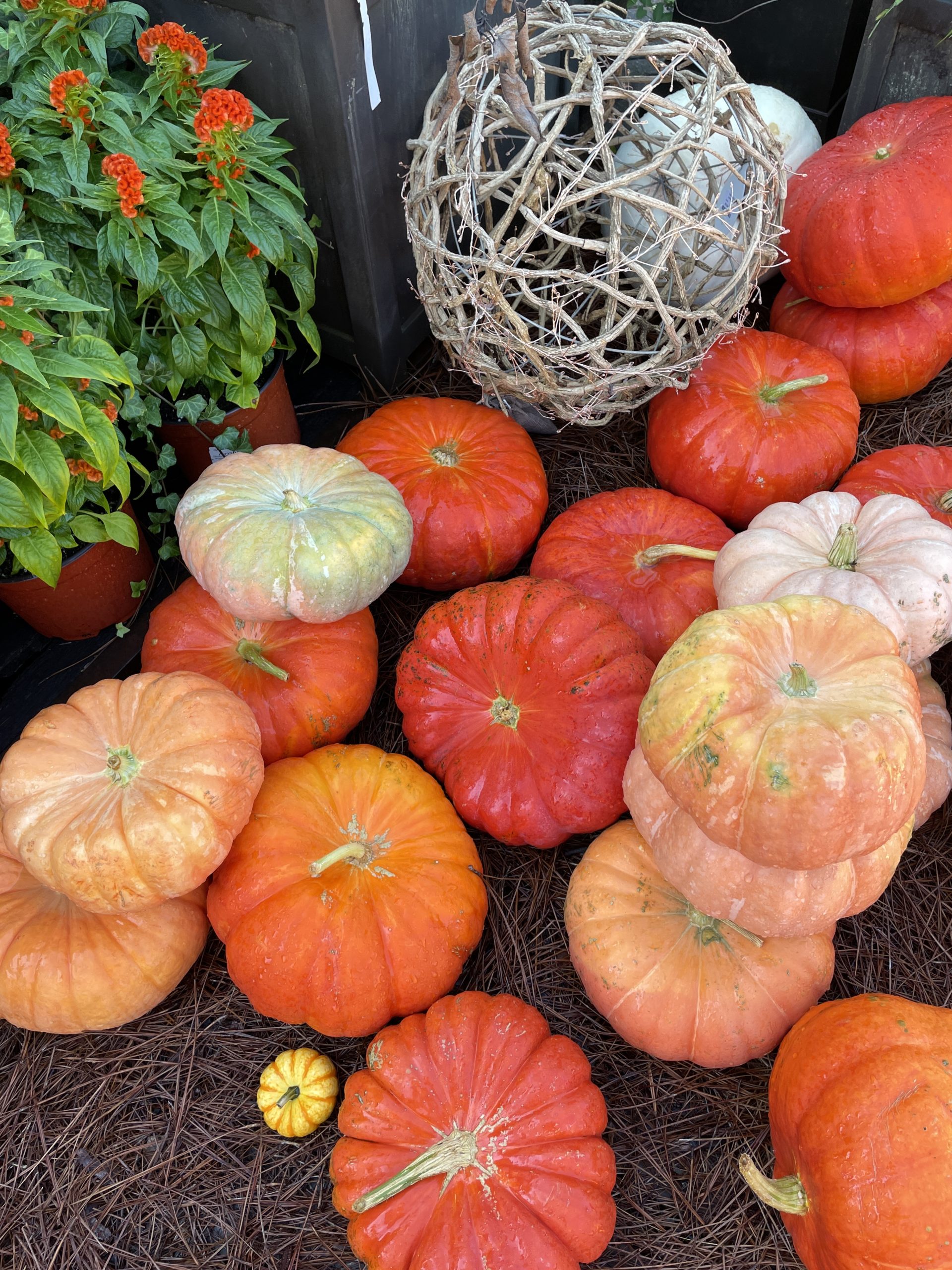
The next step is to plant the Celosia plant.
- Dig a hole at the same depth as the original plant container and twice the width of the plant’s root ball.
- Second, drop the plant with the crown 1” above the soil level. Cover the root system with the surrounding soil. Pack the soil around the plant roots to eliminate any air pockets.
- Third, build a water basin around the plant. A water basin allows water to sink to the roots rather than run off. A water basin is merely a miniature well that encircles the plant. Think of it as a moat, but smaller. It captures any runoff water, which is then absorbed into the ground. Water the plant two to three times a week for the first year, until it is established.
- Finally, during the warmer, drier months, water regularly. This is especially important when temperatures reach the 90s or when there are several days without rainfall.
When to Plant Celosia
Plant Twisted Orange as soon as you can during the early summer or fall seasons. Allow the Celosia time to adapt to the flower bed. Water the Celosia 2 to 3 times per week to ensure the plant settles in. Monitor the plant every few days for the first year.
Tips for Growing the Perfect Cockscomb
- Water weekly to support regular blooming.
- Fertilize with an all-purpose fertilizer at planting time
- Add mulch around the Celosia plant to retain water during summer.
- When planting several Celosia plants together, space plants 8” to 10” apart to allow for growth and air circulation.
- Remove spent blooms to maintain a neat appearance
- Grow as a specimen plant, as a focal point in an ornamental garden, or in containers.
- Use as a centerpiece or in a festive fall display container
- Avoid overwatering to prevent mildew conditions
- Native to tropical climates
Companion Plants for Celosia Plants
- Sunbeckia Juliana Rudbeckia
- Chrysanthemums
- Create a fall display with Pumpkins and Gourds
- Display alongside Corn Stalks for a Fall theme
With minimal planning, Celosia will settle in nicely and thrive quickly. You’ll need a sunny garden bed, water, and space to grow. Then, enjoy the Fall color display. You’ll love the vibrant colors of the Celosia plant. And as a bonus, you’ll attract tons of pollinators.
This concludes our post. Grow Celosia Twisted Orange for a festive fall garden. Please share your thoughts on this plant. Do you have a favorite Celosia plant?
If you enjoyed this post . . . .
You’ll Enjoy Our Other Gardening-Related posts.
Pumpkins
Fall Blooming Plants for Pollinators
Hardy Chrysanthemums
If you have any questions, please don’t hesitate to contact us. We are always ready to help. Include your hardiness zone and light requirements with any gardening questions. Thank you for dropping by.
Mary
Pin for Later
